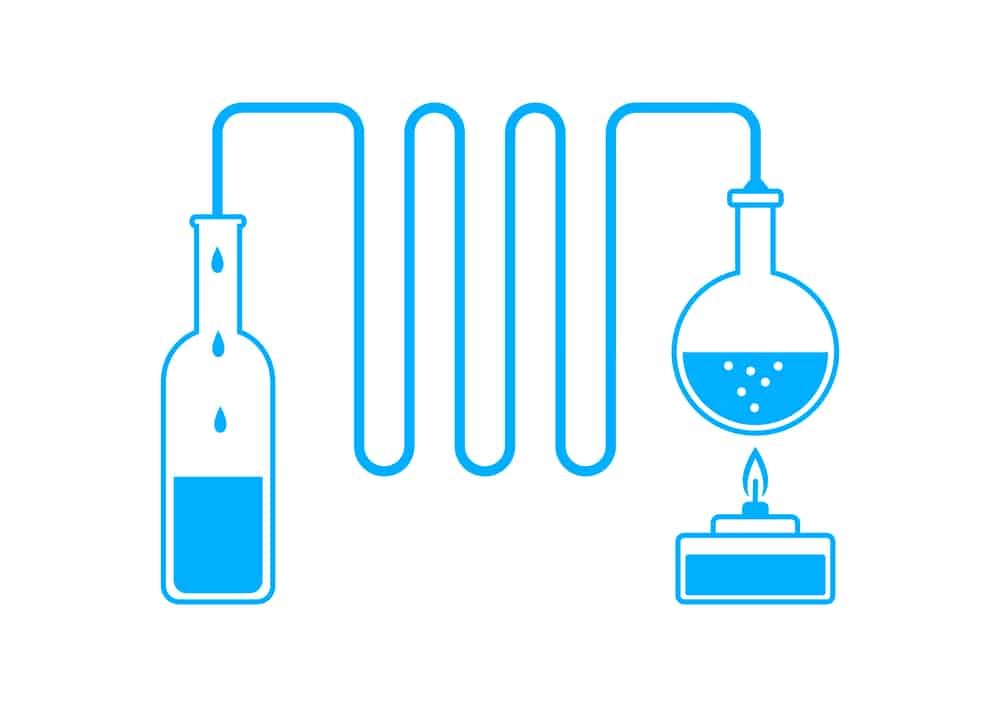We like to share product recommendations with you and hope you like them! Just to make you aware Water Filter Data may collect a small share of sales or other compensation from the links on this page.
What Is Purified Water?
Purified water means a lack of any impurities, including heavy metals and contaminants like bacteria. From a legal and regulatory perspective, purified water does not contain measurable impurities and it meets the highest standards for cleanliness.
Interestingly, purified water has the same origin as all of our household water. Purified water comes from the same sources as any household water – spring water, surface water, or groundwater. The water purification process removes virtually all impurities, which means you can drink from any source.
How To Purify Water
The most common methods of home water purification are the following.
- Carbon filters:
Purified water and carbon filters will clean water that would otherwise be considered undrinkable. Carbon filters are used to remove chlorine and improve taste and smell. More advanced filters can remove further toxins like lead and mercury. They work by utilizing activated carbon which will bond to contaminants. Faucet-mounted water filters are very common for this type of purification, but you can also get a pitcher-type purifier or an under-sink filter.
- Reverse osmosis systems:
Reverse osmosis is often considered the most effective way to purify water since it filters out anything larger than a water molecule. However, it’s pricey – reverse osmosis filters that are installed under your sink can cost $200 or more.
- Ion exchange filters:
This method is best for dealing with hard water, which is water that’s high in minerals like calcium or magnesium. Ion exchange filters use a chemical process that reduces levels of calcium and magnesium and usually replaces them with sodium ions from a salt substitute.
Risks
Adding purified water to public drinking water will reduce dental decay, but that benefit is not worth the health risks, such as memory, learning, and cognitive deficits. Excessive levels of fluorides are toxic to your nerve cells and brain. Moreover, long-term exposure leads to those negative effects.
What Is Distilled Water?

Distilled water undergoes the process of distillation, which means it boils contaminants out of pure water. Many of the natural contaminants found in water require extremely high melting and boiling points. In fact, the melting point of natural elements like zinc oxide, potassium hydroxide, and magnesium chloride is much higher than the standard water boiling temperature (212 degrees Fahrenheit). As a result, during distillation, the water turns into steam, then captured and cooled, creating distilled water that is pure in its chemical composition.
Basically, in the process of distillation, many contaminants are removed from the water using a boiling process. Inorganic minerals, metals, and other contaminants have high melting or boiling points that easily exceed the boiling point of H2O at 212 degrees F. Distilled water is water that has been heated and passed through a distiller. The contaminants are left behind while the pure H2O is captured and cooled, then becomes distilled water.
How Is Water Distilled?
The distillation method is used to remove impurities in water. The impurities have different boiling temperatures which separate them from the steam. The impurities are collected in the condensation cycle.Methanol, ethanol, and water have similar boiling temperatures and distillation is an efficient way to refine liquors.
Can You Drink It?
Distilled water is safe to drink. There are not any major drawbacks or health risks to drinking distilled water except you are not getting any added minerals that are naturally in tap water. Chemicals and minerals like calcium, fluoride, and magnesium are found in tap water and help maintain a healthy diet. These minerals will be left behind when distilled water is used.
Benefits
Water distillation is a purification and filtration system that will greatly reduce the contaminants in water. Distilled water is used in the medical and chemistry fields because it is pure and lacks any minerals or chemical contaminants.
When water is needed in chemical reactions just the smallest amount of chlorides, hard minerals, or heavy metals can fail the experiment. With home water distillers, you can filter out any contaminants that are in your tap water.
Distillers are effective at making pure water but are not efficient. A distilled water purifier is a home water purifier that uses heat to produce highly purified water, which is the same concept as a home water distiller but adds the functionality of providing a constant supply of water even if your bottle runs dry.
Risks
Distilled water is the purest one we can get, but it doesn’t mean that it is the healthiest option. Along with harmful contaminants, the process of distillation removes 99.99% of crucial electrolytes and natural minerals, as well as essential trace minerals that are naturally found in spring water.
Decreasing your intake of essential micronutrients through water may impact your health negatively. The most severe problem is the low level of calcium and magnesium your body gets. Plus, the lack of fluorides may increase the risk of cavities and bad breath.
Distilled Water Vs Purified Water: Compared
Purified water is essentially the same thing as distilled water. Both methods of purification effectively remove almost every single contaminant from water, producing water in its purest form. Boiled water has been distilled, while purified water gets more purified. It is difficult to compare the actual water product because they’re so similar.
Ultimately, deciding whether you’d prefer to drink distilled or purified water is a decision you make based on purification therapies. For some people, waiting for several hours for a water distiller to complete one cycle wouldn’t be an issue.
If you’re prepared to wait longer for your water, it may be that paying less for a device is worth it. On the other hand, you might prefer to pay more for a reverse osmosis water purification system, which produces purified water immediately, on-demand. The end result is exactly the same, but it can produce distilled or purified water more quickly.
Distilled Water Vs Purified Water: Conclusion
Again, determining which type of water is better comes down to the methods used to produce water. As both reverse osmosis and distillation have their plus points and negative points, determining an ultimate favorite of the two is up to individual preference.
Distilled water or purified water? Both give you the cleanest, purest water you can drink for your home. Reverse osmosis is a more costly process, while distillation takes longer, but both ultimately result in thorough purification that removes up to 99.9% of all contaminants from water.
Note that, like under sink and countertop water filters, other filtration methods, like activated carbon and reverse osmosis, may also be considered to produce purified water. While these filters are incredibly efficient in removing contaminants, they’re not thorough enough to remove contaminants to the same level as distillation or reverse osmosis.
Distilled Water and Purified water are both the purest and cleanest waters and if you are comparing distillation to standard water filtration, distillation produces the cleanest and purest water.

Wayne is a water quality expert – The founder of Water Filter Data. He has a degree in microbiology and his field of expertise is drinking water. His goal is to allow for clean and healthy water for as many people as possible.



